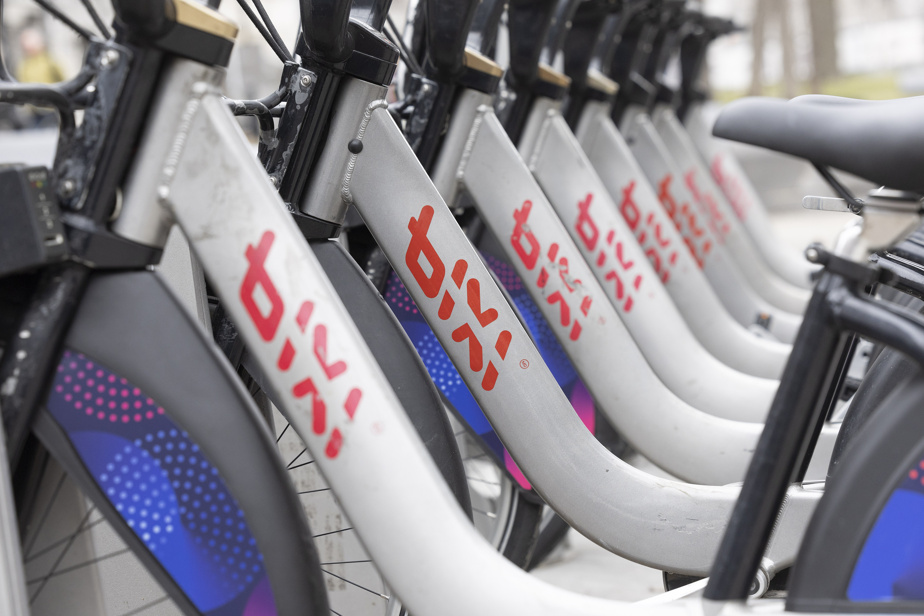BIXI Montreal will attempt for the first time in its history to provide the service year-round, including during the winter. About 150 of the 850 stations will be available after November 15, in seven boroughs, sometimes with heated slabs and roofs. The bikes, among other things, will be equipped with studded tires.
The organization, which officially launched its season on Wednesday, three days earlier than expected, is responding to a long-standing request in the cycling community. Several users were indeed sorry, every year, to see BIXI self-service bicycles (VLS) disappear from the streets of Montreal after November 15.
A pilot project will allow service to be maintained this year after this date, in an area of 100 km2 including seven boroughs: Sud-Ouest, Ahuntsic-Cartierville, Rosemont-La-Petite-Patrie, Le Plateau-Mont-Royal, Ville-Marie, Villeray–Saint-Michel–Parc-Extension and Mercier–Hochelaga-Maisonneuve.
Only traditional bicycles will be available; electric models will be put away for the winter. “We are going to introduce studded tires which will be much stronger and will allow faster braking in slippery conditions. There will also be more grippy toe clips to make sure people don’t slip,” said BIXI President Alexandre Taillefer on Wednesday.
Extending BIXI services beyond November 15 has been debated for several years in Montreal. In 2020, the organization’s general manager, Christian Vermette, said that the 2021-2022 winter season could be the right one, but that has never happened yet.
Stations revised for winter
Most of the winter stations will be reviewed, and will be located along the Réseau express vélo (REV) and metro stations, outside the roadway. “We are still in research and development, but we can already think that some stations will have heated slabs, roofs. The solar panels that we have begun to deploy will also be used to protect the bikes from the snow,” said Mr. Taillefer.
During the winter, QR code readers may also be available to facilitate bike rental. For the rest, continues the president, “we will make sure to clear the stations of snow”. “But you have to remember that it snows about ten days a year, so it’s not something that will prevent traffic,” he says.

PHOTO PATRICK SANFAÇON, THE PRESS
Alexandre Taillefer
Daily ridership is expected to be around 4,000 people during the winter season, a figure significantly lower than the number of users in summer, which averaged around 50,000 last summer.
“On the REV last February, our counters reported a 60% increase in traffic on average, while it snowed a lot,” illustrated the head of mobility on the executive committee, Sophie Mauzerolle. The City of Montreal says it is “confident” to be able to extend winter service to other boroughs in the coming years.
A growing network
In the shorter term, BIXI expects to be 100% operational by the end of April. On Wednesday, around 2,000 bikes were already available at the start of the afternoon in the metropolis.
This season, the organization will add “414 new bikes, 36 new stations and 1,468 additional anchor points”. In total, there will therefore be 865 stations and around 10,000 bicycles, of which 2,600 are electric.
A “huge terminal” will also be installed during the summer in Square Victoria, in order to leave your BIXI in the heart of downtown. It is not yet known how many bicycles can be parked there.
Loto-Québec will also join BIXI Montréal this year, under a funded partnership signed for a three-year period. The amount of the aid thus granted to BIXI has not been specified. “The important thing for us is to help ensure that BIXI is available 12 months a year and for as many people as possible,” mentioned the vice-president of communications, Benoit Lefrançois.
Less good news, however: subscription prices will increase by around 7 to 8% this year, Mr. Taillefer confirmed. Unless you take advantage of the “preseason” rate, a subscription valid until November 15 will cost you $99 plus taxes, or close to $115. An “annual” subscription to BIXI, including winter use, could eventually be made available, but not this year.
